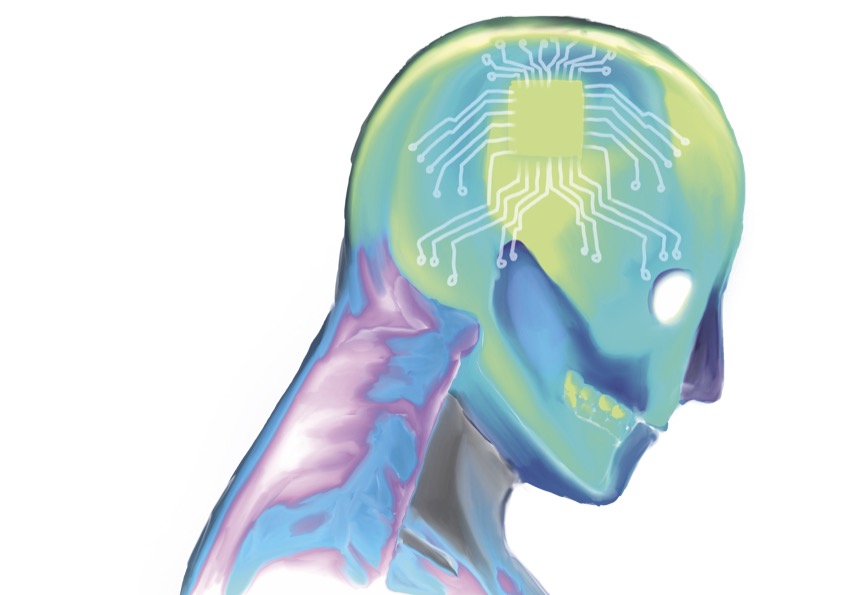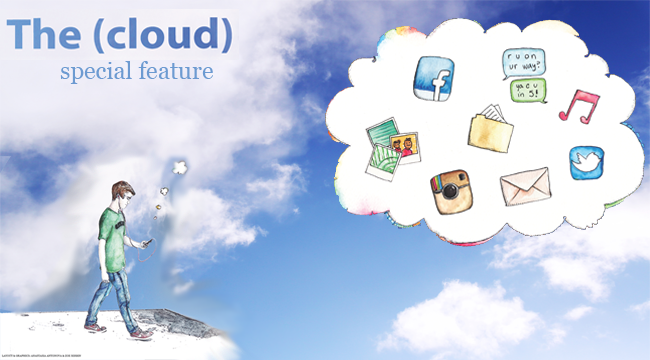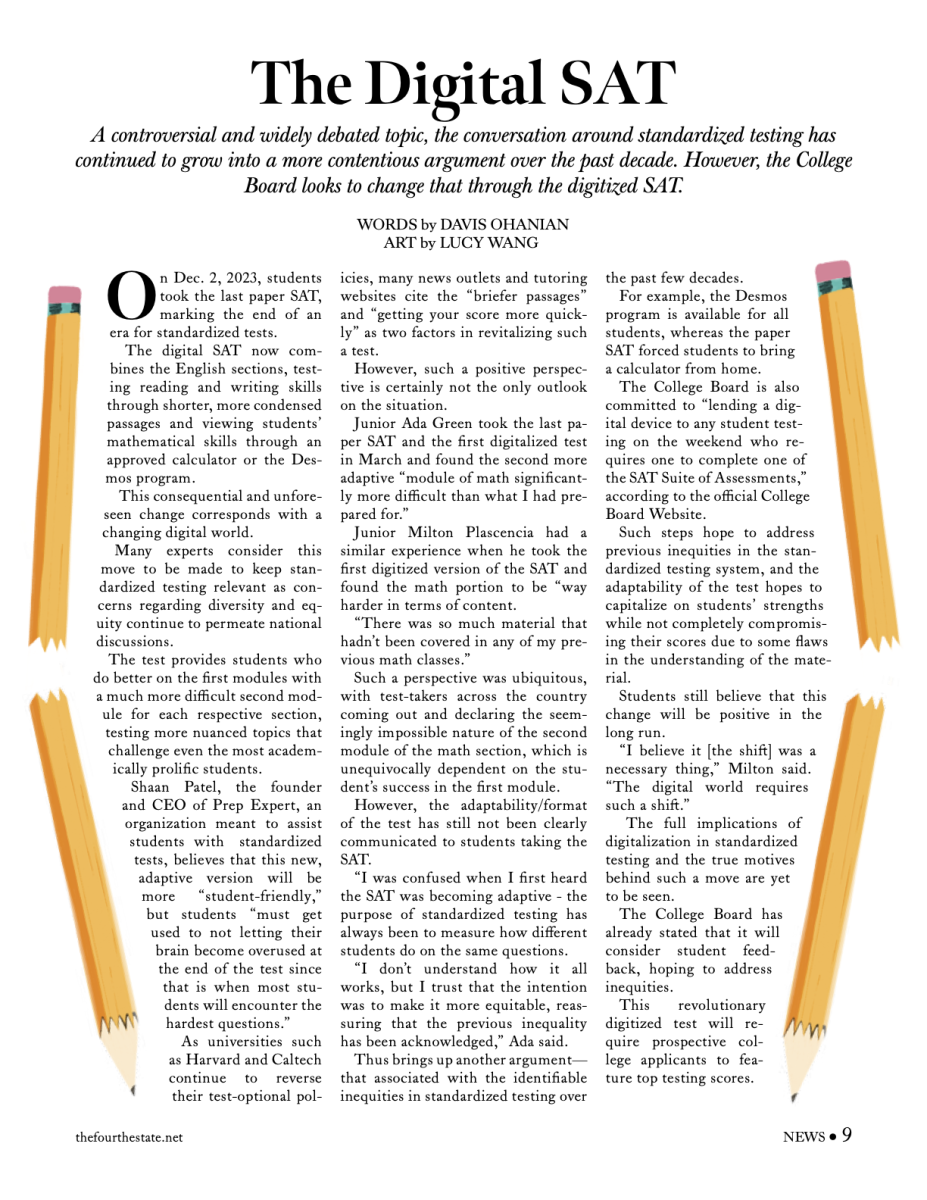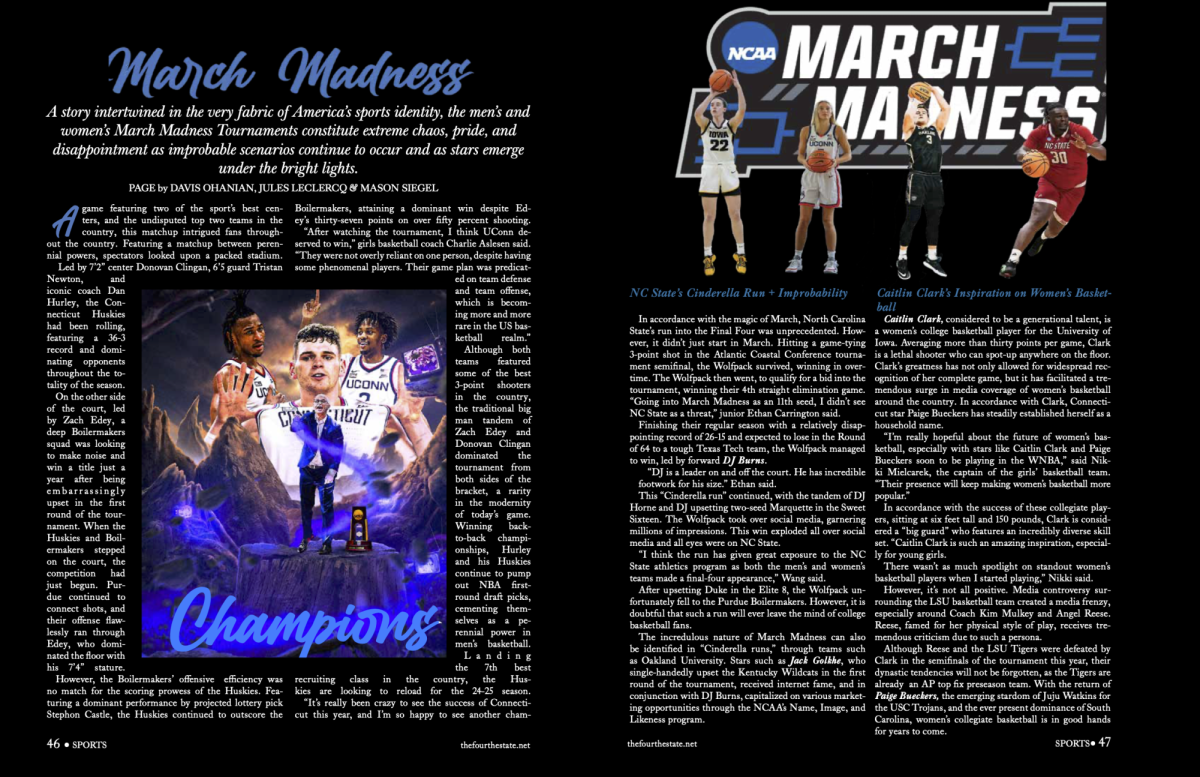Scroll Down to Read the Articles!
What Exactly is it?
No, not the kind up in the sky that sometimes looks like dinosaurs or cotton candy, but the technological kind.
The kind of cloud you hear about in the Mac store, read about in Time magazine, but don’t really understand what the heck it is.
Two weeks ago, I was that person. To me, the cloud was just about as foggy as the real kind.
Mildly intrigued by this new development, I hopped on Google and started researching.
To my surprise, the cloud isn’t nearly as complicated or as complexly conceptual as I had anticipated.
Put simply, the cloud is a giant external hard-drive for all your word documents, photos, music, and other worldly technological possessions on the Internet.
You can access whatever applications, files, or data you have opted to store in it–any time, anywhere, from any device as long as you are connected to the Internet.
Understanding how the cloud was created, where it comes from, and how it works, is much like attempting to understand magic. For most of us.
However, how to use it, why it’s useful, and what it is? Very much your concern.
A recent study has shown that the average American consumes more than 100,000 words–totaling 34 gigabytes–of data each day.
Clearly, not all of that information is being filtered through whatever device you happen to have on hand, but a small portion of that information is put into your laptop, smartphone, etc.
Let’s say you’re working on a paper at home on your laptop.
After slaving away for hours, countless trips to dictionary.com for the perfect word, and endless researching and highlighting, you have, indeed, the perfect research paper.
What ensues now if you happen to oversleep the following morning, rush off to school and realize your perfect research paper is still saved safely away inside your laptop which is oh-so-conveniently left at home?
Let’s assume you were like me, and had no idea what the heck the cloud was, didn’t know, didn’t really care too much, none of your data is in the cloud, including the perfect research paper.
Now what happens? In short, you’re stuck turning in the perfect paper one day late all because your paper wasn’t uploaded to the cloud.
However, had you been perhaps feeling tech-savvy a few days before, you could have uploaded any files of your choice into the cloud to be accessed from any Internet-connected device anytime, anywhere in the world.
This, my friends, is why the cloud is so gloriously and endlessly useful.
Visit your friends in Australia and show them pictures of your dog back home from their tablet; share music with your uncle from a computer in a random Internet cafe in Oregon; or heaven forbid you drop your computer, it internally combusts, exploding in a shower of sparks and fireworks, and there’s that ominous sinking feeling that your entire digital life has gone up in smoke, you can rest assured, because you upload everything to the cloud, that although your poor computer may now only exist in the form of shrapnel, your entire digital life is, in fact, completely intact and safe, in the cloud.
Pros & Cons
The Pros:
We’ve all seen that Apple commercial, the one where John Smith takes a photo with his iPhone and, instantaneously, the same picture of John Jr. is downloaded onto the Smith family iMac. While, to some, this air-brushed take on today’s technology may seem like science-fiction, it’s not.
What you and I saw in this advertisement was reality. What you and I saw was cloud-computing.
Truth be told, cloud-computing–or as it is informally known, the Cloud—has been around for some time. At this point, you should already know this truth—if not, you need to take a 12-inch stroll in the North-West direction.
Now that you are a seasoned meteorologist, my argument for the Cloud should come as no surprise.
The Cloud is a building block for progress and innovation. It saves time and money, requires very little physical space, and brings the world into an even-tighter technological bear-hug.
Let’s start with efficiency: instead of spending countless hours maintaining, fixing, and updating hardware—especially servers—a company can actually focus on its mission. Since data is stored in cyberspace, hefty servers are rendered obsolete, and less equipment results in less money spent.
On top of reducing the amount of physical space needed, the Cloud facilitates the transfer of information, especially of larger files. This means less paper is used, which not only saves money, but also helps the environment.
Since information can be saved in the Cloud, it can be accessed remotely, allowing for more simultaneous brain power.
An example of this can be seen in the use of Foldit, an online game that allows people around the world to solve protein-folding puzzles—their results are used in the research of various diseases.
Lower operating costs, combined with connectivity and easy access, allow for more competition (especially with smaller businesses), furthering the stew-pot of ideas and innovation.
In other words, the Cloud is a golden opportunity; it reallocates and reduces the need for valuable resources, especially time and money; it allows an unprecedented level of global buy-in; and finally, it eliminates the wall of entry fees that plague small businesses.
On a more personal level, the Cloud relieves a great deal of headaches: for John Smith and family, the Cloud is an intuitive step into the faster, smarter, and safer realm of technology.
The Cons:
Out of sight, out of reach, out of touch.
There was a time when our efforts were tangible –when childhood photos were neatly organized into scrapbooks, resumes were tucked away and essays would pile up on our desks.
But it seems as though our work has taken to the sky. Literally.
We used to pursue technological advancements to cut back on infant mortality rates, to extend the average life expectancy, and to ensure the safety and survival of the people.
We have entered a vicious cycle in which students are too overwhelmed by their increasing workload to gain control of their “work” and work expediently. In order to rectify this, technicians developed a system by which all digital information can be stored in one place–in one cloud.
While a single cloud may seem harmless, one must consider the risks associated with trusting an abstract storage device with all of your important and valuable information.
Should the cloud crash and fail, it will destroy everything.
For the many businesses that have entrusted their valuable information to these digital storage devices, and the dedicated students intent on pursuing a higher education, such risks aren’t worth taking.
And with good reason, too. Last April, Amazon’s cloud service crashed, resulting in the failure of multiple businesses’ websites.
Beyond the explicit risks posed with the use of the Cloud, its abstract qualities result in it affecting Internet users who may not have even signed up for its services.
A study by Gerry Smith of the Huffington Post revealed that, “millions of Gmail, Twitter, and Facebook users access cloud-computing every day, perhaps without even realizing it.”
Cloud users discovered that is not as safe and secure as it should be.
Technological experts have unveiled that even amateur hackers can break into storage devices.
Last June, Dropbox, a medium through which users can access the Cloud, disclosed a security glitch in their system that permitted any Dropbox user to log into any account by entering any password.
Researchers at UCSD and MIT were able to hack into the Amazon Cloud service by creating a “mock” Cloud to trick the security system of the real Cloud into leaking its users’ information.
Users of cloud storage “have to be comfortable with someone else holding all your data,” said Jamz Yaneza, a threat research manager with the security firm Trend Micro.










































